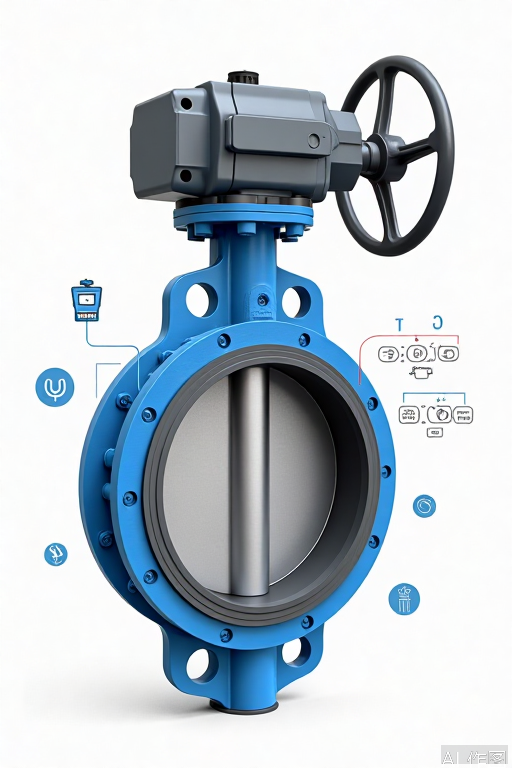As the core control element in industrial pipeline systems, the stable operation of electric butterfly valves is inseparable from the precise matching of actuators. Improper selection may cause valve jamming, actuator overload or energy waste. This article will systematically analyze the key points of electric butterfly valve actuator selection to help users avoid common misunderstandings.
- Core parameters affecting actuator selection
1. Torque requirement
-Basic calculation: The actuator torque needs to be greater than the torque required for valve opening and closing, which is usually determined by the valve size, medium pressure and sealing level.
Formula reference: `T = (D² × P × C)/(2 × 1000)`
Where: D = valve diameter (mm), P = medium pressure (bar), C = operating coefficient (normal operating conditions take 0.3-0.5)
-Safety redundancy: It is recommended to add an additional 20%-30% torque margin to cope with medium fluctuations or wear and aging.
2. Valve size and type
- The torque requirements of butterfly valves of different diameters vary significantly (for example, the torque of DN50 and DN300 may differ by more than 10 times).
- Due to the optimized sealing structure, the torque requirements of double eccentric/triple eccentric butterfly valves are usually 30%-50% lower than those of midline butterfly valves.
3. Medium characteristics and working conditions
- Viscosity influence: High-viscosity media (such as crude oil and slurry) need to increase the torque margin by 15%-25%.
- Temperature limit: High-temperature working conditions (>80℃) require the use of high-temperature resistant motors and sealing materials to avoid overheating and failure of the actuator.
- Four-step method for actuator selection
Step 1: Obtain valve parameters
Collect basic data such as valve model, diameter, pressure level, sealing material, and medium type (liquid/gas/corrosive).
Step 2: Calculate the operating torque
- Check the torque curve provided by the valve manufacturer
- If there is no data, the peak torque of the valve fully open → fully closed process can be measured (a torque wrench is recommended).
Step 3: Match the actuator specifications
- Select the actuator rated torque ≥ (calculated torque × 1.3). For example: if the valve is measured to require 80Nm torque, the actuator should be selected as a model of 100Nm or more.
- Pay attention to the voltage adaptation (AC220V/380V or DC24V) and the control signal type (switch type/regulation type).
Step 4: Verify special working conditions
- Explosion-proof requirements (Ex d IIC T6 and other certifications)
- For high-frequency operation scenarios (>1200 times/day), a high-cycle life actuator must be selected and a heat dissipation device must be installed.
Accurate selection is the key to ensure the reliable operation of the electric butterfly valve system. It is recommended to work closely with valve suppliers and actuator manufacturers to provide complete operating parameters to obtain customized solutions. If you need further technical support, please contact our engineering team, and we will provide you with free selection calculation and 3D model adaptation services.
Post time: Apr-08-2025




